Related Research Articles

Karl Ernst Ritter von Baer Edler von Huthorn was a Baltic German scientist and explorer. Baer is also known in Russia as Karl Maksímovich Ber.
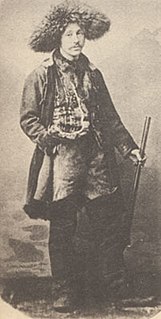
Gustav Ferdinand Richard Radde was a German naturalist and Siberian explorer. Radde's warbler and several other species are named after him.

The Order of Saint George is the highest military decoration of the Russian Federation. Originally established on 26 November 1769 Julian as the highest military decoration of the Russian Empire for commissioned officers and generals by Empress Catherine the Great. After the 1917 Russian Revolution it was awarded by the White movement anti-communist forces under Alexander Kolchak until their collapse in 1921. The order was revived in the Russian Federation on 8 August 2000 by Decree №1463 of the President of Russia. The current award criteria were amended on 7 September 2010 by Presidential Decree 1099.
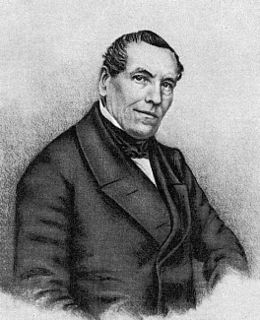
Édouard Ménétries was a French entomologist, zoologist, and herpetologist. He is best known as the founder of the Russian Entomological Society.

Alexander Theodor von Middendorff was a zoologist and explorer of Baltic German and Estonian extraction.

Wrangel is a Baltic German noble family, included in Swedish, Russian, Spanish and Prussian nobility. Its earliest known ancestor is the knight Eilardus (1241†).

A Generaloberst was the second-highest general officer rank in the German Reichswehr and Wehrmacht, the Austro-Hungarian Common Army, the East German National People's Army and in their respective police services. The rank was equal to a four-star full general but below a general field marshal. The rank was equivalent to a Generaladmiral in the Kriegsmarine until 1945 or to a Flottenadmiral in the Volksmarine until 1990. It was the highest ordinary military rank and the highest military rank awarded in peacetime; the higher rank of general field marshal was awarded only in wartime by the head of state. In general, a Generaloberst had the same privileges as a general field marshal.

1850
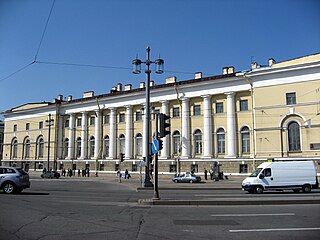
The Zoological Museum of the Zoological Institute of the Russian Academy of Sciences is a Russian museum devoted to zoology. It is located in Saint Petersburg, on Universitetskaya Embankment. It is one of the ten largest nature history museums in the world.

The Russian Geographical Society (RGO) is a learned society based in Saint Petersburg, Russia. It promotes exploration and geography with research programs in fields including oceanography and ethnography.

The Imperial Order of Saint Alexander Nevsky was an order of chivalry of the Russian Empire first awarded on 1 June [O.S. 21 May] 1725 by Empress Catherine I of Russia.
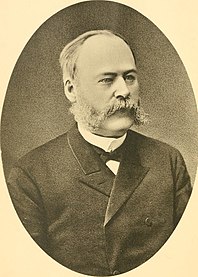
Ferdinand Ferdinandovich Morawitz was a Russian entomologist.
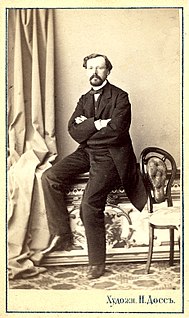
August Feodorovich Morawitz was a Russian entomologist interested in Coleoptera.

Archduke Peter Ferdinand of Austria, Prince of Hungary and Bohemia was an Austro-Hungarian archduke and an army commander in the Austro-Hungarian Army during World War I.

Karl Bernhard Woldemar Ferdinand von Ditmar was a Baltic German geologist and explorer, who travelled in and contributed to the scientific understanding of Kamchatka.
Chloropterus is a genus of leaf beetles in the subfamily Eumolpinae. It is distributed in Eastern Europe, West to Central Asia and North Africa.
Chloropterus versicolor is a species of beetle in the leaf beetle family, subfamily Eumolpinae. It is distributed in Ukraine, southern European Russia, Turkey, Azerbaijan, Kazakhstan and Turkmenistan. It was first described as Heterocnemis versicolor by Ferdinand Morawitz in 1860.
References
- ↑ "Ferdinand Morawitz". zobodat.at. Archived from the original on 6 October 2014. Retrieved 2 October 2014.